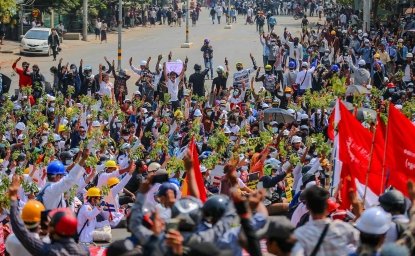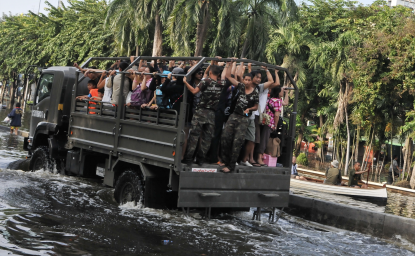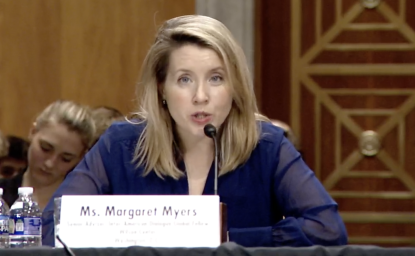Lịch sử Nam bộ kháng chiến and the Interwar Period

Pierre Asselin, "Lịch sử Nam bộ kháng chiến and the Interwar Period," review of Lịch sử Nam bộ kháng chiến (History of the Southern Resistance), edited by Hội Đồng Chỉ Đạo Biên Soạn Lịch Sử Nam Bộ Kháng Chiến, Cold War International History Project, October 2014.
The Vietnamese Communist Party has since its founding maintained a veil of secrecy over its decision-making process, and carefully vetted or otherwise manipulated information about the outcomes of its policies released to the public. Like other such parties elsewhere, it has made exhaustive usage of propaganda, of disinformation, and used history as a tool to create an image of itself as meritorious, just, and infallible. Largely as a result of such practices, historians attempting to make sense of the Vietnamese communist experience during the Vietnam War face daunting challenges. Foremost among them is locating credible source material to illuminate the strategic thinking of communist leaders and the worldview that conditioned that thinking. Equally exigent is gathering credible information on the outcomes of those decisions as the leaders themselves really saw them.
Lịch sử Nam bộ kháng chiến, Tap 2: 1954-1975 (LSNBKC) is one of several official (i.e., sanctioned by party-state authorities) histories of the American War period published by Nhà xuất bản Chính trị quốc gia (National Political Publishers), the party press.[1] Like some of those histories, it provides useful new insights on the Vietnamese communist experience, into the development of the Vietnamese revolution during its most crucial period. While much of the information and interpretations presented herein is by now familiar to those of us who have worked on the period using Vietnamese language materials, there is a good deal to be learned in these pages. The book sheds new light on various important issues, and otherwise validates some of our assumptions about the southern revolution. This review will highlight some revelations the volumes provides on key developments of the period 1954-65, and discuss other ways in which the volume advances our understanding of the origins of the Vietnam War. It will also address some of that book’s most serious shortcomings.
***
The first section on the immediate post-Geneva period is excellent.[2] It provides good information on the international context and Vietnam’s place in it. It suggests that the Vietnamese revolution was not an isolated event but part of a wider worldwide movement for national emancipation and liberation, even as the DRVN sought to become a productive member of the socialist bloc. Thus, Vietnamese communists contributed to two of three “revolutionary currents” (dòng thác cách mạng) that defined the international system at the time: the socialist movement; the movement of workers and progressive peoples in capitalist countries; and the national liberation movement in the Third World.[3] This is interesting as most Vietnamese histories present the Vietnamese revolution as a unique phenomenon that evolved relatively independent of other circumstances, with the exception of the Russian and Chinese revolutions. As recent scholarship in the West has demonstrated, the Vietnamese revolution was indeed integral part of the “global Cold War,” of the international environment shaped by the intersection of the Soviet-American rivalry, the Sino-Soviet dispute, and Third World political activism.[4]
Discussions of the Sino-Soviet dispute remain taboo in official Vietnamese circles, and in official histories by extension. Not only do the latter mention it only in passing—if at all, but they also say very little of substance about Hanoi’s relations with its Soviet and Chinese allies. The first section addresses both the dispute and relations with Moscow and Beijing. Most notable, it acknowledges that starting in 1956 “relations between the [communist] parties and governments of the Soviet Union and China grew progressively worse, adversely affecting and causing a major disadvantage for the international communist and workers’ movements.”[5] That is not much, to be sure, but it does confirm that the dispute dismayed Hanoi, and that constitutes more meaningful information on the dispute and its implications for Hanoi than most other such histories typically volunteer.
The section also candidly recognizes that DRVN authorities struggled a great deal to stave off economic collapse in the North after July 1954. The war against France destroyed much of its infrastructure. Nearly one million people experienced famine in October 1954, it admits, and a number of them eventually died of malnutrition. Unsurprisingly in light of those conditions, 850,000 northern civilians went south in 1954-55, as permitted under the terms of the Geneva accords, encouraged to no insignificant degree by a “big plan” of the Americans to undermine and discredit the new regime in Hanoi.[6] While that figure will surprise no one, it is an extremely rare official acknowledgment of the large number of northerners who emigrated to the South. Similarly noteworthy is the admission that some 85,000 party members and cadres stayed in the South after July 1954, which also represents a rare official iteration of the number of agents and members who did not regroup north after July 1954. “More than 60,000 cadres and party members,” the narrative remarks, “remained in Nam Bo [former Cochinchina, the southernmost part of Vietnam] (there were 25,000 more in Trung Bo [former Annam, or central Vietnam]), and became the backbone and leadership of the [southern] masses in their struggle against Diem and the Americans in both rural and urban areas.”[7]
Given circumstances domestically and internationally, immediately following the signing of the Geneva accords Hanoi abided by a policy of “peaceful struggle” prioritizing rehabilitation and socialist transformation of the northern economy at the expense of immediate southern “liberation.” Hanoi’s revolutionary strategy was outlined, formalized, and communicated to rank-and-file members via a 6 September 1954 document, the essence of which stated that “the policy of the Party Central Committee is peaceful political struggle to bring about the country’s reunification in accordance with the spirit of the Geneva Agreement.”[8] According to LSNBKC, Hanoi undertook economic rehabilitation of the North partly to accommodate the tens of thousands of southern Viet Minh combattants regrouping to the area above the seventeenth parallel, as mandated by the Geneva accords. At that time, “the Party and Government in the North concerned themselves with accommodating and assisting tens of thousands of southern cadres, soldiers, and children who regrouped to the North.” To meet that and related challenges, “the Government and people of the North endeavored to rehabilitate the economy and stabilize the [overall] situation” in the DRVN.[9] Possibly, Hanoi also thought large numbers of southern civilians would voluntarily relocate to the North, which did not happen.
In suspending armed struggle in mid-1954, DRVN leaders hoped to preclude American military intervention, a prospect that alarmed most of them. Even before the war against France ended, “American imperialists” had become “the foremost enemy of the Vietnamese people.”[10] During a 15-17 July 1954 Central Committee meeting, party leaders determined that “American imperialism was a major obstacle precluding the restoration of peace in Indochina,” that it had “effectively become the main enemy of the Indochinese people.”[11] Thus, “the line, the policy of Vietnam [i.e., of the communist leadership in Hanoi] in the early years of the implementation of the Geneva Agreement had to take into account the scheme of the American imperialists as well as at the impact of the ‘cold war’ between the two camps in Asia and the rest of the world,” LSNBKC notes. “Overall, in the victorious atmosphere resulting from the achievement of independence and freedom in half the country and the surmounting of numerous difficulties, the Vietnamese Workers’ Party Center decreed that the two strategic tasks of the North were: - Strengthening the North for the sovereign Democratic Republican regime. - Strengthening the North to create a firm rear base for the struggle for the peaceful reunification of the country.”[12]
Predictably, many southern revolutionaries disapproved of the party leadership’s decision to suspend hostilities in order to transform the North into a “rear base” of the Vietnamese revolution. While western scholars have documented that dissatisfaction as best they could, Vietnamese sources for the most part have been silent on the issue. “Unity of thought” was purportedly a hallmark of communist decision-making and of the party more generally; suggesting otherwise defies party—and academic—orthodoxy. Interestingly, LSNBKC acknowledges that a number of southern revolutionaries disapproved of the leadership’s decision to suspend hostilities in July 1954, that they were keen on resuming armed struggle and even staged “self-defense armed activities” in “many regions” to resist Ngo Dinh Diem’s “reactionary” regime, despite orders to the contrary. “In this situation, many districts in Nam Bo experienced self-defense armed activities, despite the Resolution of the Eight Plenum of the Central Committee of the Vietnamese Workers’ Party (August 1955) which decreed: ‘Our policy is the achievement of Vietnamese reunification by peaceful means.’”[13] Ultimately, the book maintains, Hanoi prevailed over southern militants, for the most part. “During the period from July 1954 to June 1956,” it notes, “the Center persisted in calling for the struggle to implement the Geneva Agreement to take place by political, peaceful means,” and thus “give no pretext to the [rival regime in the] South to resume armed struggle.”[14] According to LSNBKC, it succeeded.
For its part, the section on 1963-65 offers a “standard” or orthodox account of communist activity; it is about policy implementation more than policymaking.[15] Relative to earlier chapters, these are basically devoid of interesting insights and new knowledge. Reading them, one is left with the distinct impression that military historians affiliated with the Defense Ministry’s Institute of Military History produced them. Those historians are among the most conservative in Vietnam and, generally speaking, the least inclined to revise the presentation of the Vietnamese past, or to share new knowledge with readers that could compromise the sanctity of the Vietnamese revolution and the magnanimous role played by the armed forces in it. In these chapters references to the broader international context are essentially absent. The overall weakness of this chapter, its contents and lacunae, its lack of originality are in many ways symtomatic of all that is wrong with conventional Vietnamese scholarship on the war: narrowly focused, poorly referenced, dry, and uninsightful. Perhaps most disappointing, very little—and nothing of substance—is written about the VWP Central Committee’s Resolution 9 of December 1963, a seminal document that marked an important turning point in the conduct of the Vietnamese revolution by DRVN authorities. The most revealing—and I use the term loosely—statement is to the effect that the Committee’s Ninth Plenum “marked a new maturity in the reasoning and implementation capacity of the Party in the war against the American invasion for national salvation.”[16] Resolution 9, for its part, “added to and completed the line of the southern revolution, leading our entire people to defeat the ‘special war’ strategy of the American imperialists.”[17]
Instead, what we get is a laundry list of operations and other activities conducted by revolutionary armed forces. The section is littered with references to individual “martyrs” (chien si) and their place and date of birth. There is also much detail on the prowesses of individual military units. Cited works include writings by Ho Chi Minh and westerners supportive of official Vietnamese interpretations, sympathetic to the Vietnamese cause during the Vietnam War, or otherwise critical of U.S. military intervention (e.g., Wilfred Burchett, Neil Sheehan, and Michael McLear), favorites of Vietnamese military historians trying to legitimize their scholarship through use of foreign sources. This all is reminiscent of and consistent with “old-school” history in Vietnam; it contributes nothing valuable to serious diplomatic historians. One interesting bit of information presented in this section is that “according to a summary on regional logistics, 50% of all weapons in the South were produced in [local] districts and villages, with the remaining majority of the weapons obtained from Saigon’s armed forces.”[18]
***
LSNBKC confirms, and at a minimum corroborates, conclusions, hypotheses, and other assumptions presented in recent western scholarship on the Vietnam War and articulated by those of us who have sought to present the Vietnamese communist perspective on the basis of Vietnam’s own primary and secondary record. Ultimately, this may well be this volume’s greatest merit.
Click Here to Return to the Symposium on the History of Vietnam's Southern Resistance
[1] Hội Đồng Chỉ Đạo Biên Soạn Lịch Sử Nam Bộ Kháng Chiến, ed., Lịch sử Nam bộ kháng chiến, Tap 2: 1954-1975 (History of the Southern Resistance, Vol. 2, 1954-1975) (Hà Nội: Nhà xuất bản Chính trị quốc gia, 2010).
[2] Hội Đồng Chỉ Đạo Biên Soạn Lịch Sử Nam Bộ Kháng Chiến, ed., Lịch sử Nam bộ kháng chiến, Tap 2, 17-74.
[3] Hội Đồng Chỉ Đạo Biên Soạn Lịch Sử Nam Bộ Kháng Chiến, ed., Lịch sử Nam bộ kháng chiến, Tap 2, 21.
[4] Odd Arne Westad, The Global Cold War: Third World Interventions and the Making of Our Times (New York: Cambridge University Press, 2005); Paul Thomas Chamberlin, The Global Offensive: The United States, the Palestinian Liberation Organization, and the Making of the Post-Cold War Order (New York: Oxford University Press, 2012).
[5] Hội Đồng Chỉ Đạo Biên Soạn Lịch Sử Nam Bộ Kháng Chiến, ed., Lịch sử Nam bộ kháng chiến, Tap 2, 20
[6] Hội Đồng Chỉ Đạo Biên Soạn Lịch Sử Nam Bộ Kháng Chiến, ed., Lịch sử Nam bộ kháng chiến, Tap 2, 33
[7] Hội Đồng Chỉ Đạo Biên Soạn Lịch Sử Nam Bộ Kháng Chiến, ed., Lịch sử Nam bộ kháng chiến, Tap 2, 34
[8] Hội Đồng Chỉ Đạo Biên Soạn Lịch Sử Nam Bộ Kháng Chiến, ed., Lịch sử Nam bộ kháng chiến, Tap 2, 38. Emphasis in original.
[9] Hội Đồng Chỉ Đạo Biên Soạn Lịch Sử Nam Bộ Kháng Chiến, ed., Lịch sử Nam bộ kháng chiến, Tap 2, 29.
[10] Hội Đồng Chỉ Đạo Biên Soạn Lịch Sử Nam Bộ Kháng Chiến, ed., Lịch sử Nam bộ kháng chiến, Tap 2, 25.
[11] Hội Đồng Chỉ Đạo Biên Soạn Lịch Sử Nam Bộ Kháng Chiến, ed., Lịch sử Nam bộ kháng chiến, Tap 2, 27. Emphasis in original
[12] Hội Đồng Chỉ Đạo Biên Soạn Lịch Sử Nam Bộ Kháng Chiến, ed., Lịch sử Nam bộ kháng chiến, Tap 2, 30.
[13] Hội Đồng Chỉ Đạo Biên Soạn Lịch Sử Nam Bộ Kháng Chiến, ed., Lịch sử Nam bộ kháng chiến, Tap 2, 40.
[14] Hội Đồng Chỉ Đạo Biên Soạn Lịch Sử Nam Bộ Kháng Chiến, ed., Lịch sử Nam bộ kháng chiến, Tap 2, 41.
[15] Hội Đồng Chỉ Đạo Biên Soạn Lịch Sử Nam Bộ Kháng Chiến, ed., Lịch sử Nam bộ kháng chiến, Tap 2, 331-401.
[16] Hội Đồng Chỉ Đạo Biên Soạn Lịch Sử Nam Bộ Kháng Chiến, ed., Lịch sử Nam bộ kháng chiến, Tap 2, 337.
[17] Hội Đồng Chỉ Đạo Biên Soạn Lịch Sử Nam Bộ Kháng Chiến, ed., Lịch sử Nam bộ kháng chiến, Tap 2, 337.
[18] Hội Đồng Chỉ Đạo Biên Soạn Lịch Sử Nam Bộ Kháng Chiến, ed., Lịch sử Nam bộ kháng chiến, Tap 2, 379.
Author


Cold War International History Project
The Cold War International History Project supports the full and prompt release of historical materials by governments on all sides of the Cold War. Read more

Explore More
Browse Insights & Analysis
Symposium on the History of Vietnam's Southern Resistance

Myanmar’s Junta and the 2026 Elections: A Fig Leaf for Legitimacy?

